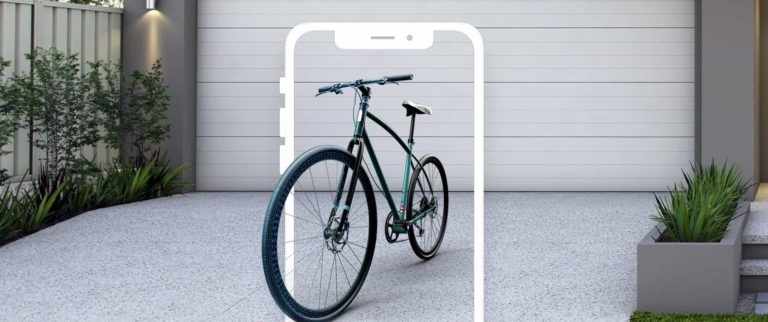
Shoppability is the new black. There’s a trend towards all things being shoppable. We’re talking buy buttons on everything from YouTube videos to Instagram Stories. This isn’t necessarily a new phenomenon but is one of the many trends that’s been Covid-accelerated.
Elsewhere – and for similar reasons – we see a separate trend: visual commerce. This includes product visualization and visual search. The former lets you try on everything from shoes to lipstick to couches using AR lenses. The latter identifies things you point your phone at.
Panning back, these trends – shoppability and visual commerce – are on a collision course. Point your phone at a jacket a friend is wearing using Google Lens or Snap Scan, then buy it right on the spot. It compresses the purchase funnel through a visually-informed decision flow.
All of the above is well underway, but there’s a ways to go in capability and cultural acclimation. Accelerating that process is eCommerce inflections in the Covid era. Another accelerant is apps like Snap that let AR piggyback on socially-fueled shopping and product discovery.
Cosmetics & Couches
After examining Snap and Pinterest in earlier parts of this series, we move on to Shopify. In fact, it’s one of the original innovators in the shoppability movement introduced above. It has democratized eCommerce by making it easier for anyone to have a storefront.
Beyond just a “destination,” Shopify has struck deals with everyone from Walmart to TikTok. This offers additional value to merchants by letting them amplify their storefronts in well-traveled environments and feeds – a hook for Shopify to get and keep their business.
As the next step in its evolutionary path, Shopify is now betting that visually-rich shopping will be the next standard in eCommerce. Inspired by the IRL-deprived Covid era, it wants its merchants to use tools like AR to offer their shoppers more product dimension and confidence.
Specifically, it now lets merchants offer 3D and AR versions of their products. To define those modalities, 3D involves zooming and spinning a given product on your desktop, while AR activates the camera to do the same in your physical space – ideal for cosmetics and couches.
Tech-Illiterate and Time-Starved
As noted AR lets Shopify offer its merchants (and their customers) IRL dimension and buyer confidence. In fact, it reports that merchants who have integrated 3D shopping have experienced 94 percent greater conversions. AR is also known to reduce product returns.
But though these benefits are evident, it’s easier said than done to execute 3D and AR shopping, especially for tech-illiterate and time-starved merchants. For example, one major bottleneck is all of the moving parts in creating 3D product models, including color and size variants.
This is where Shopify’s DNA and penchant for democratization come in. According to Inc. Magazine, it has begun working with Poplar Studio (via its third-party app marketplace) to offer an easy way for merchants to capture and process 3D scans using only a smartphone.
As quick historical background, Shopify has offered 3D model generation using the USDZ file format that’s output to Apple’s QuickLook AR feature. But this required a fragmented set of capture and processing tools. For merchants, it needs to be mobile, app-based, and simple.
Future-Proofing Play
Backing up, AR shopping or “camera commerce” isn’t a silver bullet, but it is aligned with products that can benefit from IRL perspective. That’s the case with bulky items like couches and TVs (see if they fit in your room). It also shines in style items like cosmetics and even shoes.
There are also demographic factors at play. The Snapchat generation is particularly camera-forward and AR comfortable. As this generation phases into the adult population, it will continue gaining spending power. This makes 3D shopping a future-proofing play, among other things.
Shopify is on board with all of this, as seen in its latest 3D integrations and recent acquisitions such as Primer. As we wrote at the time, this was a move to test product visualization in a specific category (paint colors). Expect more vertical-specific moves in other product categories.
And if foresight and future-proofing aren’t heavy enough motivators for Shopify, competitive pressure may be. As noted, Snap, Pinterest and several others are blitzing visual shopping. To add to that list, 800-pound gorilla Google is likewise moving into this area, given Google Swirl.
We’ll pick it up there in Part IV of this series with a deeper look at Google’s moves in AR shopping…

